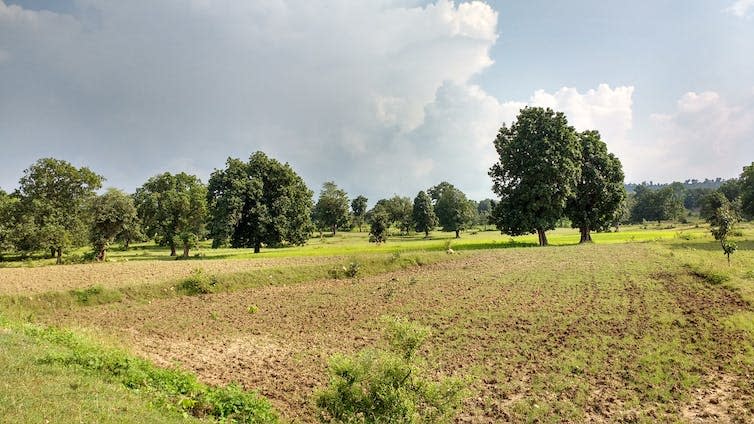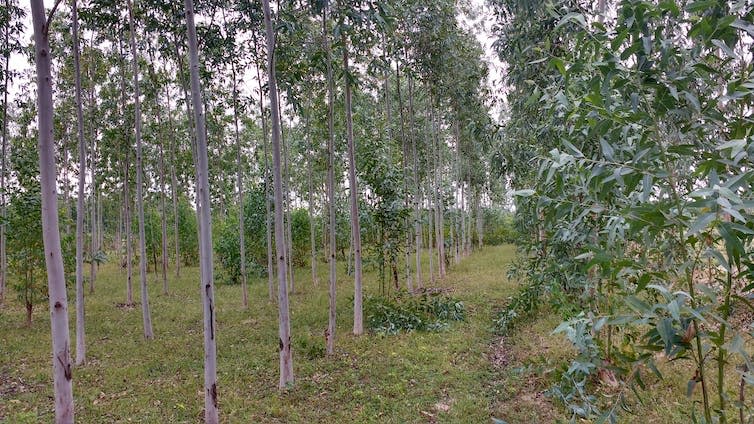Imagine making a change to a farm field that, in addition to producing food, will also produce building materials, fuel and feed. This change will also nourish the health of the soil, regulate the microclimate and support wildlife in combating pests. In fact, it may even produce a completely different product.
All this can be possible by planting trees not only among trees but also among shrubs, palm trees and bamboo.
This approach to farming is known as agroforestry, and experts believe it could increase the sustainability of agriculture around the world. On a large scale, it could help reduce climate change by storing more carbon in soils that can still serve other purposes. Countries can even count trees planted on agricultural lands as part of their reforestation commitments.
There is plenty of room to plant trees on farms in South Asia and sub-Saharan Africa. However, most of these plots are small; On average it is less than 2 hectares (or two football fields). Any use of space must truly earn it.
So how can we make trees work for farmers and the planet? India, where extraordinary changes in agroforestry have occurred in the last two decades, offers some insights.
India’s agroforestry experiment
India’s first effort to get more trees on farms began in 1999 with the Lok Vaniki scheme in the central Indian state of Madhya Pradesh. The state government has launched a scheme to help farmers with degraded land earn additional income from timber and has provided them with teak saplings.
The plan got off to a troubled start. India’s supreme court had banned the cutting of any trees except those permitted under the forest work plan three years ago. Before farmers can sell the timber they grow, their requests to cut down the tree must be approved by the government.
Farmers were worried about planting something they couldn’t get permission to harvest, and teak trees take 20 years to produce lumber. The difficult process of obtaining permits for small and marginal farmers and high transportation costs have hampered the plan.
The state responded by exempting some trees from felling regulations. By 2014, India had a national agroforestry policy that offered farmers simpler procedures for collecting and transporting saplings and trees. Yet tree cover on farms has not changed. In fact, according to a study I contributed to, the last decade has seen a dramatic decline in trees on farms in India.
The decline was evident in mature trees. These gnarled veterans once shaded open wells on farms and kept water from evaporating in the sun’s glare. It may now be possible to render such trees unusable by digging deeper wells.
The spread of mechanized agriculture has increased the value of treeless fields where tractors and agricultural vehicles can easily maneuver. Attacks by fungal parasites have also taken over other trees.
Some farmers were not emotional. In interviews, many people said they saw little benefit from trees that could block sunlight from reaching crops. But the decline of native trees on farms, such as neem, mahua and jamun, once prized for their medicinal oils and nutritious fruits, has threatened rural nutrition, especially in the poorest areas.

Trees on farms, not tree farms
While trees in agricultural lands have decreased across India, block fields have expanded. These are actually farms that grow nothing but trees.
These plantations consist largely of exotic and fast-growing trees such as eucalyptus, poplar and casuarina, all of which are exempt from felling regulations. Lured by the prospect of generating carbon credits in the international carbon market and the demand for pulp to make paper, farmers with some of the smallest landholdings in India have sought to shift crops to block fields.
When the price of carbon credits collapsed in 2012 with the collapse of the UN’s clean development mechanism, these small farmers were left with little to show for it. A later study confirmed that many people would be better off keeping their land for agriculture.


Although there is increasing demand for pulp and timber in India, this demand is likely to favor farmers who can cultivate large areas, bear the costs of harvesting and transport, and expect returns from the fields; This is something that small and marginal farmers cannot afford.
These exotic plantations are not a boon for the environment either. For example, eucalyptus consumes a lot of water and soil nutrients, making the soil less fertile for future planting. Its leaves and flowers are less beneficial to birds than many native trees.
There is a rush to plant more trees on farms around the world, regardless of what farmers will do with that tree in 20 years or how it might interfere with crop production. This problem is not unique to India and is seen elsewhere, including Kenya.
Trees on farms still need to be encouraged; preferably native trees with local nutrition and medicinal benefits. But so far the trend in India and elsewhere has been towards block planting of exotic trees, a phenomenon largely attracted by carbon credits.
The focus should be on supporting small and marginal farmers to grow local trees sustainably. Scattered trees of many species on small farms have greater benefits for farmers and the environment than single-species plantations.
But for this to happen, there needs to be a way to finance this process. If carbon credit mechanisms can recognize this agroforestry model and help small farmers add trees to their plantations, it would be a big shift in the right direction.


Don’t have time to read as much as you’d like about climate change?
Get a weekly digest in your inbox instead. Every Wednesday, The Conversation’s environment editor writes Imagine, a short email that digs a little deeper into a single climate issue. Join over 30,000 readers who have subscribed so far.
This article is republished from The Conversation under a Creative Commons license. Read the original article.


Dhanapal Govindarajulu does not work for, consult, own shares in, or receive funding from any company or organization that would benefit from this article, and has disclosed no relevant affiliations beyond his academic duties.